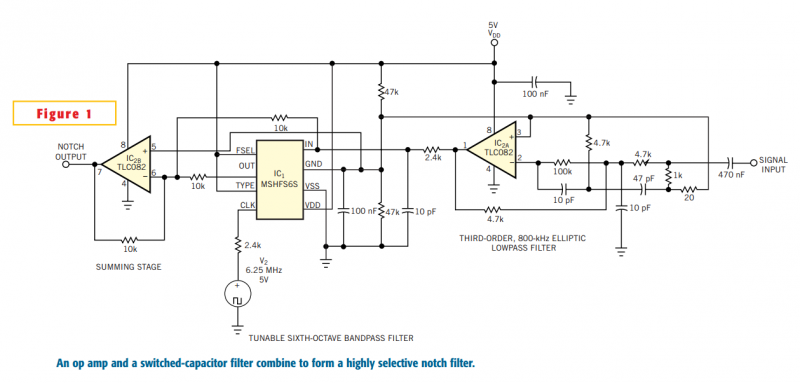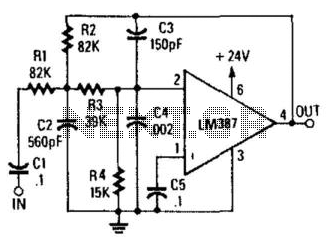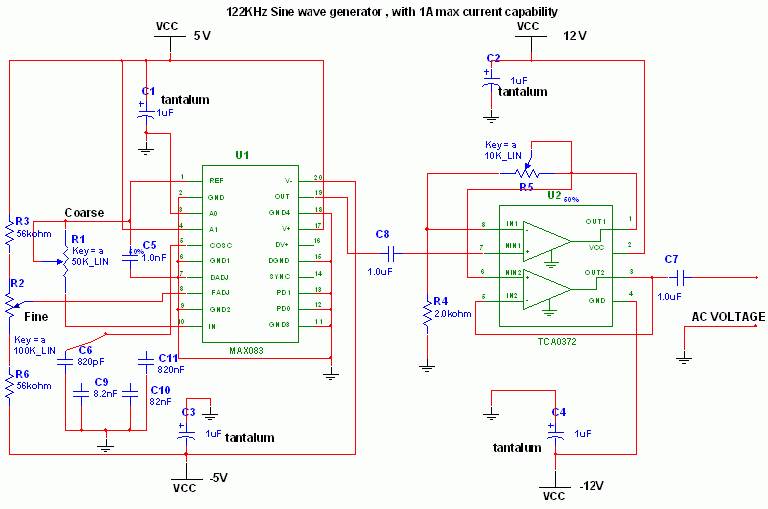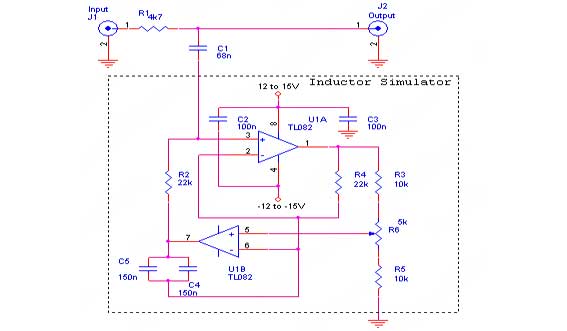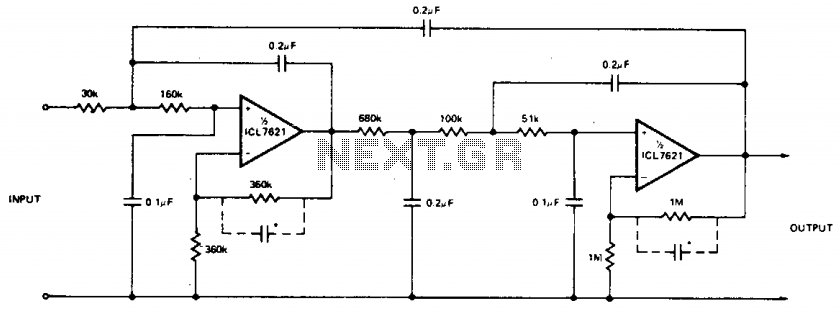
Adjustable notch filter

In applications where the rejected signal may slightly deviate from the null point in a notch network, it is beneficial to decrease the Q factor of the network. This adjustment ensures consistent rejection across a broader range of input frequencies. The circuit diagram illustrates a configuration where the Q can be varied from 0.3 to 50. A portion of the output is fed back to resistors R3 and capacitor C3 through a secondary voltage follower, with the notch Q being dependent on the level of feedback signal.
A secondary voltage follower is required to drive the twin "T" network from a low-resistance source, ensuring that neither the notch frequency nor the depth is affected by the settings of the potentiometer.
In this circuit design, the notch filter is implemented using a twin "T" configuration, which is known for its effectiveness in rejecting specific frequencies while allowing others to pass. The Q factor, an indicator of the selectivity or sharpness of the notch, can be finely tuned between 0.3 and 50, allowing for flexibility in various applications. A lower Q factor results in a broader bandwidth for frequency rejection, which can be particularly useful in environments where signals may vary.
The use of a secondary voltage follower plays a crucial role in maintaining the integrity of the notch filter's performance. By providing a low-resistance source, it ensures that the feedback mechanism does not alter the desired notch characteristics as the potentiometer is adjusted. This feedback loop, which incorporates components R3 and C3, is essential for controlling the notch Q. The amount of signal fed back into the circuit directly influences the filter's performance, allowing for precise adjustments to meet specific application requirements.
Overall, this circuit demonstrates a sophisticated approach to frequency filtering, combining adjustable Q factors with robust feedback mechanisms to achieve reliable and consistent performance across a range of input conditions. The design is particularly suitable for applications in audio processing, communication systems, and any scenario where precise frequency rejection is necessary.In applications where the rejected signal might deviate slightly from the null on the notch network, it is advantageous to lower the Q of the network. This insures some rejection over a wider range of input frequencies. The figure shows a circuit where the Q may be varied from 0.3 to 50. A fraction of the output is fed back to R3 and C3 by a second voltage follower, and the notch Q is dependent on the amount of signal fed back.
A second follower is necessary to drive the twin "T" from a low-resistance source so that the notch frequency and depth will not change with the potentiometer setting.
A secondary voltage follower is required to drive the twin "T" network from a low-resistance source, ensuring that neither the notch frequency nor the depth is affected by the settings of the potentiometer.
In this circuit design, the notch filter is implemented using a twin "T" configuration, which is known for its effectiveness in rejecting specific frequencies while allowing others to pass. The Q factor, an indicator of the selectivity or sharpness of the notch, can be finely tuned between 0.3 and 50, allowing for flexibility in various applications. A lower Q factor results in a broader bandwidth for frequency rejection, which can be particularly useful in environments where signals may vary.
The use of a secondary voltage follower plays a crucial role in maintaining the integrity of the notch filter's performance. By providing a low-resistance source, it ensures that the feedback mechanism does not alter the desired notch characteristics as the potentiometer is adjusted. This feedback loop, which incorporates components R3 and C3, is essential for controlling the notch Q. The amount of signal fed back into the circuit directly influences the filter's performance, allowing for precise adjustments to meet specific application requirements.
Overall, this circuit demonstrates a sophisticated approach to frequency filtering, combining adjustable Q factors with robust feedback mechanisms to achieve reliable and consistent performance across a range of input conditions. The design is particularly suitable for applications in audio processing, communication systems, and any scenario where precise frequency rejection is necessary.In applications where the rejected signal might deviate slightly from the null on the notch network, it is advantageous to lower the Q of the network. This insures some rejection over a wider range of input frequencies. The figure shows a circuit where the Q may be varied from 0.3 to 50. A fraction of the output is fed back to R3 and C3 by a second voltage follower, and the notch Q is dependent on the amount of signal fed back.
A second follower is necessary to drive the twin "T" from a low-resistance source so that the notch frequency and depth will not change with the potentiometer setting.
